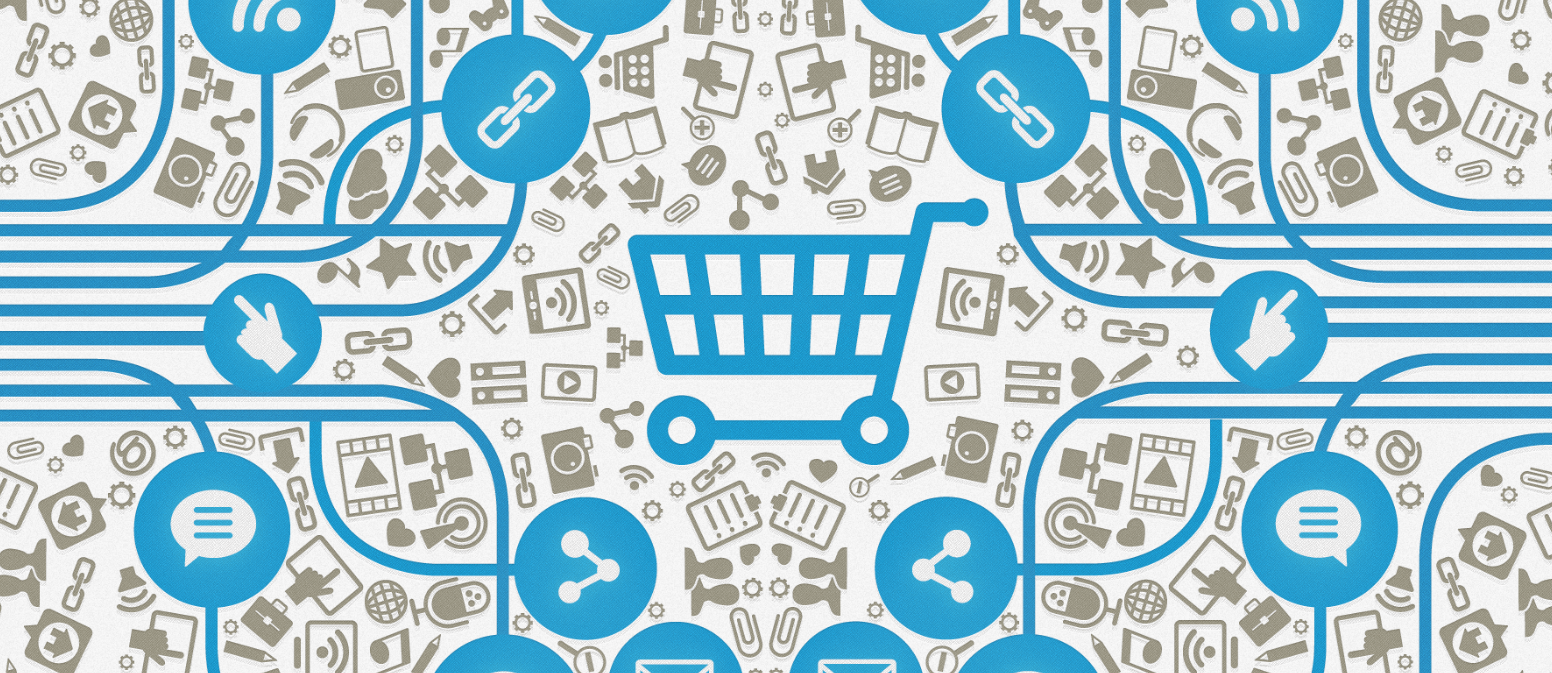- About us
- Services
- Projects
- Coaching
-
News
Topics: Sales and Marketing, sales, sales leads, Leads, real estate, marketing, Roman Badnarchuk, lead generation, Sales Training, N5R Sales Training, marketing agency, Top condo sales trainers, 2014
“Make your product easier to buy than your competition, or you will nd your customers buying from them, not you.” - Mark Cuban
40% (20 out of 50) of the fastest-growing B2B companies make their pricing public.Of the 20 companies that make their pricing public, 14 use tiered pricing.
Of the 14 companies with tiered pricing, 6 have CTAs prompting enterprise customers to request quotes.
Why do companies treat selling to the enterprise di erently than selling to everyone else? ere are lots of factors, but it usually comes down to scale. Rolling out a product or service to a massive organization can be a seriously complex (and expensive) undertaking.
So while being able to make unassisted purchases on a B2B website is convenient for most, enterprise customers need to be able to talk through the ner details of your product/service with a real human before they buy.
Read MoreTopics: Sales and Marketing, sales, sales leads, Leads, real estate, marketing, Roman Badnarchuk, lead generation, Sales Training, N5R Sales Training, marketing agency, Top condo sales trainers, 2014
“Our jobs as marketers are to understand how the customerwants to buy and help them do so.” - Bryan Eisenberg
B2B websites lead people down 1 of 2 paths: toward a product, or toward a salesperson.
The experience prospective customers have when they land on your website can be crucial to whether or not they end
up converting. As Slack CEO Stewart Butterfield once commented:“... even the best slogans, ads, landing pages, PR campaigns, etc., will fall down
if they are not supported by the experience people have when they hit our site, when they sign up for an account, when they first begin using the product and when theystart using it day in, day out.”
In analyzing the websites of the 50 fastest-growing B2B companies, we found two distinct paths that companies typically try to send potential
customers down. They either direct people to A) engage with the product
or service in some way, or to B) engage with a salesperson or other company representative to learn more.62% (31 out of 50) of websites have primary CTAs directing people to the product/service.
38% (19 out of 50) have primary CTAs directing people to talk to Sales.
Of course, many of the companies that have product-focused primary CTAs also have secondary CTAs for talking to Sales. And remember the 11 companies with live chat from the previous chapter? All 11 of those websites have product-focused CTAs.
e takeaway: It doesn’t have to be one way or the other. Within the 50 fastest-growing B2B companies in the U.S., both tactics are employed. You can encourage people to discover the value of your product through having them experience it for themselves, and you can provide them with an opportunity to talk to a real person if that’s what they want.
Regardless of the path you choose to send people down, make sure that their rst experience is (as Slack's CEO recommended) a positive one.
36% (18 out of 50) of the fastest-growing B2B companies o er free trials or freemium versions of their product.
A free trial or freemium version of a product can be a driving force behind a company’s growth. It’s a model that allows prospective customers to experience rst-hand how a product is going to perform, which reduces the need for canned sales pitches and aggressive tactics.
As Roger Lee of Battery Ventures once wrote:
“Instead of hiring a huge sales force and sending these people out to convince potential customers to buy your product -- the way Oracle, SAP, Microsoft, and even Salesforce.com built empires -- a freemium model is a perpetual motion machine through which your product sells itself.”
Of the 18 companies with some free component to their product ...
Read MoreTopics: Sales and Marketing, sales, sales leads, Leads, real estate, marketing, Roman Badnarchuk, lead generation, Sales Training, N5R Sales Training, marketing agency, Top condo sales trainers, 2014
“ These days, people want to learn before they buy, be educated instead of pitched.” - Brian Clark
Live chat provides an additional channel of communication for customers and prospects.
Based on our research, 80% of the fastest- growing B2B companies maintain a blog. And just under half offer downloadable resources. So there’s no denying that, for many of these high-growth companies, content plays a significant role in how they communicate with customers and prospects.
But what about the people who engage with this content and then have questions?
Or the people who don’t want to wait for someone to email them after filling out a form? People who want to talk to a real person right now?
One solution that's emerging is 1:1 messaging, which allows prospects and customers to have 1:1 conversations with support reps, sales reps, and other employees via a "live chat" widget on a company's website.
22% (11 out of 50) of the fastest-growing B2B companies have a live chat widget on their website.
Of the 11 companies using live chat, 5 are also using gated content.
Of the 11 companies using live chat, 8 have it on their homepage. 3 have it appear after you navigate to a pricing or contact page.
Of the 11 companies using live chat, 3 show photos of the employees you're chatting with.
Read MoreTopics: Sales and Marketing, sales, sales leads, Leads, real estate, marketing, Roman Badnarchuk, lead generation, Sales Training, N5R Sales Training, marketing agency, Top condo sales trainers, 2014
“Content builds relationships. Relationships are built on trust. Trust drives revenue.”With the rise of inbound marketing and content marketing, content has become the cornerstone of many modern B2B marketing operations. Here’s how it typically works: Blogging drives top-of-the-funnel traffic to a company’s website.From there, callsto-action (CTAs) encourage visitors to download content (e.g. ebooks, whitepapers, and templates) so they can learn more about a particular topic. This process can be repeated and scaled by marketing teams to include a wide variety of tactics at every stage of the funnel, but the end goal is always the same: to add value and build relationships that drive revenue for your business.80% (40 out of 50) of the fastest-growing B2B companies maintain a blog and/or online publication.44% (22 out of 50) of the fastest-growing B2B companies offer downloadable content, like ebooks or whitepapers.28% (14 out of 50) of the fastest-growing B2B companies use gated content. 16% (8 out of 50) offer ungated content.These differences in content accessibility highlight an important, ongoing conversation in sales and marketing: Should required forms and lead capture remain central to what we’re doing? Or are there other ways we can communicate with prospective customers once they’ve engaged with our content? For some companies, forms are being replaced or supplemented with 1:1 messaging, which allows sales and marketing teams to communicate with website visitors in real-time.Read MoreTopics: Sales and Marketing, sales, sales leads, Leads, real estate, marketing, Roman Badnarchuk, lead generation, Sales Training, N5R Sales Training, marketing agency, Top condo sales trainers, 2014
How to Get 10x More Leads this YearUse Social Media Properly
A quick review of what most people are doing on social media will make it clear why it’s not working. Social media is not simply a repository for auto-posting existing blog articles. If that’s what you’re doing, you might be underutilizing a very powerful tool.
To optimize social media and drive more visitors to your website, you’re going to have to work harder to engage your followers and get them involved in the conversation. This means asking questions, getting opinions and coming up with creative campaigns that take full advantage of the sharing potential built into social media platforms.
For example, instead of just posting blog articles, try posting conversation starters. Then follow up with supporting information to fuel the conversation and engage your audiences. Wrap up the mini-campaign with content that people can download. Now you’re not only driving up social media reach numbers and new visitors to your website, you’re also giving those visitors the opportunity to convert into leads right from LinkedIn, Facebook, Twitter or Instagram.
Read MoreTopics: Sales and Marketing, sales, sales leads, Leads, real estate, marketing, Roman Badnarchuk, lead generation, Sales Training, N5R Sales Training, marketing agency, Top condo sales trainers, 2014
How to Get 10x More Leads this YearAnother way to improve conversion rates is to place offers across your site more strategically. Your website needs to have a variety of different pages for different phases of your prospects’ buyer journeys. You need pages for awareness, pages for consideration and pages for decision-making, and you need offers that align with those pages.
If you put a Contact Us offer on an awareness page, the conversion rate is going to be very low, because the people on that page don’t want to talk to you yet. If you put a Request A Demo or Free Trial offer on an awareness page, they’re not going to convert, either. Why? Demos and free trials are usually bottom-of-the-funnel, decision-making offers, and putting them on the home page – or every page – is a big mistake.
Instead, take your website through a mapping exercise where you identify the role of each page in the buyer journey. Then add the right offers to the right pages. This exercise often reveals that your site is actually missing pages for different stages of the buyer journey. These pages have to get added if you want to give visitors the experience they need to convert from visitor to lead.
Read MoreTopics: Sales and Marketing, sales, sales leads, Leads, real estate, marketing, Roman Badnarchuk, lead generation, Sales Training, N5R Sales Training, marketing agency, Top condo sales trainers, 2014
How to Get 10x More Leads this YearWe tackled ways to increase the number of visitors to your site, now let’s tackle ways to drive leads. As I mentioned earlier, the key metric on leads is the conversion rate. Improve conversion rates and improve leads: It’s that simple.
The best place to start is by targeting high-traffic landing pages. Through a series of optimization exercises, you can double, or in some cases triple, the conversion rate on these already popular pages.
Of all the recommendations in this blog, this one is by far the fastest, easiest and most efficient way to improve lead generation, especially if your site already has decent visitor numbers. I’ve written a number of landing page optimization articles over the past couple of months, so instead of going over it again, here’s a link to a recent article on improving conversion rates on landing pages.
Read MoreTopics: Sales and Marketing, sales, sales leads, Leads, real estate, marketing, Roman Badnarchuk, lead generation, Sales Training, N5R Sales Training, marketing agency, Top condo sales trainers, 2014
How to Get 10x More Leads this YearDeploy Off-Site SEO Tactics
The on-site tactics discussed above are only half the equation. The other half is finding prospects who are online but on other sites. They’re not searching for you, but they are spending time online: visiting similar sites, communities and groups and reading blogs, emails and content from related providers – not competitors, but information sources that already exist. Remember, 90% of people get the information they need to make a purchase decision from online research. Your content has to be available and easy to access.
Driving new visitors to your website from other online properties is complicated. You have to take your target persona and create an online behavioral profile, identifying the blogs they read, the emails they subscribe to, the sites they visit, the groups they’re members of and the websites they frequent. Once you have that target list, you can start reaching out to those communities to help them with their mission.
Your goal is not to sell anything to community members, your goal is to help those community members with valuable educational content. Since you have created tons of new educational materials (you have these assets, right?), now you’re in a position to share these materials with community managers. Remember, the manager's job is to educate and provide value to members. So you now share the same goal.
Once you get a critical mass of off-site referral properties like this, you’ll see this visitor source increasing, with leads from these new visitors following.
Read MoreTopics: Sales and Marketing, sales, sales leads, Leads, real estate, marketing, Roman Badnarchuk, lead generation, Sales Training, N5R Sales Training, marketing agency, Top condo sales trainers, 2014
Read MoreIn social media, timing is everything. You only want to send messages when someone is around to see them. And a larger audience means more opportunities for engagement and meaningful connections—all of which benefit your business.
So when are the best times to post on social? There is no definitive answer to that. But there are resources that can serve as a guide to help you find the optimal posting times.
The best time to post on Twitter
As a constant stream of information, getting your timing right on Twitter can seem like a fine art. With the half-life of a Tweet being 24 minutes—four times shorter than a Facebook post—your window of opportunity is tight. As Wiselytics explains, “For Facebook, a post reaches 75 percent of its potential engagement in five hours. A median Tweet reaches this 75 percent mark in less than three hours.”
This short timeframe means that the Tweets you do send out get in front of as many eyeballs as possible. How do you do this? Our previous post, 3 Tips On How To Find the Best Time to Tweet, gives some advice for finding the optimal time for your Twitter activity:
- Location matters—”One useful strategy is to create a Twitter handle for each region, use a social media management tool to manage and monitor all of them in one place, and then create social media reports to track when you get the most engagement for each Twitter handle.
- Use the right tool—There are numerous tools out there to help you find the best time to Tweet, such as Audiense (previously SocialBro) and Hootsuite’s AutoSchedule which “chooses a time based on when your Tweets have performed the best. You can AutoSchedule from both the dashboard and theHootlet extension.”
- Make sure you engage on social media—”Knowing when the best time to tweet from your company’s Twitter handle starts with social media engagement.”
We’ve gathered data from a variety of sources so that you can use these tips as a starting point, rather than a blind trial and error. Here are the best times to Tweet, according to data gathered from a variety of organizations:
- The Huffington Post: “For maximum retweets, post at 5 p.m., 12 p.m., and 6 p.m. Additionally, 12 p.m. and 6 p.m. also deliver higher click-through rates. The best days to Tweet for business-to-business organizations is Monday through Friday, for business-to-consumer it’s the weekends and Wednesdays.”
- Hubspot: Between 12 p.m. and 3 p.m. from Monday to Friday, and between5 p.m. and 6 p.m. on Wednesdays.
- Kissmetrics: Weekdays at 5 p.m., where the highest percentage of Retweets occur.
So while there are some overlaps, there is no one definitive answer to this question. But this information is a great place to start with your own strategic trial and error efforts. Start Tweeting at the above times, and pay attention to when your audience engages the most. This is the only way to find out when the best time to post to Twitter is—at least for your own business.
Image via Kissmetrics. The best time to post to Facebook
As Facebook is often a smorgasbord of personal connections and brand interactions, it’s an interesting one to try and navigate from a timing point of view. Throw in Facebook’s algorithm, and this might feel like a more difficult task than it truly is. A whopping 75 percent of your Facebook post’s engagement will happen within the first five hours, which means that while it’s not a huge amount of time, you have more leverage than with a Tweet. But as Post Planner explains, your Facebook post “impressions hit their climax much sooner than engagement.” A full 75 percent of your post’s lifetime impressions are reached after just two and a half hours.
To make the most of this time, you want to ensure you’re paying attention to when your audience is most active. Just like Twitter, the best time to post on Facebook will obviously depend on your business. But here are some recommendations to get you started:
- Quick Sprout: Thursdays and Fridays, either at 1 p.m. for the most shares, or 3 p.m. for the most clicks. As explained, “The less people want to be at work, the more they are on Facebook!”
- Optimizely: Mondays through Thursdays between 6 p.m. and 8 p.m.
- Microsoft: Thursdays and Fridays from 1 p.m. to 3 p.m.
- Hubspot: Thursdays and Fridays from 1 p.m. to 3 p.m.
While there are some differences, there’s the consistent finding that Thursdays and Fridays from 1 p.m. to 3 p.m. are a good place to start when trying to find the best time to post to Facebook.
The best time to post on Instagram
Although its name originally suggested that you should be posting to Instagram, well, instantly, that simply isn’t the case these days. As Likes are the main measurement approach to Instagram posts, you might feel as if there is more pressure to get timing right with your content here. I can confess that I’m definitely somebody who has delayed putting up a picture because I felt it wasn’t during a ‘peak time’ and would get less Likes. (This way of thinking is broken down in a hilariously accurate Man Repeller post The Instagram Post-Time Debate, which I highly recommend reading.)
Think about a day in the life of your audience, and try to strategically post according to this. What time are people waking up and doing their first-thing-in-the-morning-Insta-scroll? Do they work full-time? Where do they live? Consider your audience’s down time such as between meetings, commuting, lunch, and before bed. All of these are things to think about when trying to match post time with your audience’s use time.
In addition to considering these factors, test out some of the following recommended times:
- Hubspot: Anytime from Monday to Thursday except from 3 p.m. to 4 p.m.
- Latergramme: Wednesday at 5 p.m.
- Weekdays between 6 a.m. and 12 p.m.
As Mavrck explained, “While posting volume is relatively low during those morning hours, users are still peeking at their feeds regularly on their smartphones. Therefore, they represent a sizable audience during a time when there’s less competition for attention.”
Topics: Sales and Marketing, sales, sales leads, Leads, real estate, marketing, Roman Badnarchuk, lead generation, Sales Training, N5R Sales Training, marketing agency, Top condo sales trainers, 2014
Your Email to Subscribe
Archives
- February 2016 (56)
- August 2016 (43)
- November 2014 (36)
- January 2016 (33)
- September 2016 (31)
- October 2016 (31)
- December 2011 (30)
- November 2012 (29)
- December 2014 (26)
- August 2015 (25)
- July 2013 (24)
- September 2015 (24)
- May 2011 (20)
- November 2011 (20)
- June 2016 (20)
- January 2011 (19)
- September 2011 (19)
- June 2012 (19)
- October 2015 (19)
- March 2013 (18)
- April 2013 (18)
- January 2013 (17)
- July 2016 (17)
- January 2012 (16)
- February 2012 (15)
- July 2015 (14)
- November 2016 (14)
- November 2010 (13)
- December 2010 (13)
- June 2011 (13)
- October 2011 (12)
- December 2012 (12)
- February 2013 (12)
- January 2015 (12)
- January 2017 (12)
- May 2013 (11)
- August 2011 (10)
- March 2012 (10)
- June 2013 (10)
- December 2016 (10)
- October 2014 (9)
- April 2011 (8)
- May 2012 (8)
- September 2013 (8)
- July 2012 (7)
- December 2013 (7)
- May 2016 (7)
- February 2011 (5)
- July 2011 (5)
- April 2015 (5)
- March 2016 (5)
- November 2017 (5)
- May 2019 (5)
- July 2010 (4)
- March 2011 (4)
- August 2013 (4)
- February 2015 (4)
- August 2010 (3)
- September 2010 (3)
- August 2012 (3)
- November 2013 (3)
- February 2014 (3)
- May 2015 (3)
- October 2010 (2)
- January 2014 (2)
- July 2014 (2)
- March 2015 (2)
- December 2017 (2)
- April 2012 (1)
- May 2014 (1)
- November 2015 (1)
- March 2017 (1)
- July 2017 (1)
- February 2018 (1)
- October 2021 (1)











